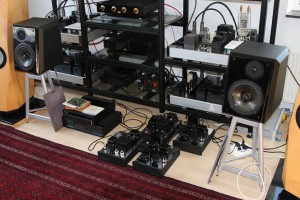 wie versprochen stellt uns hier Reinout seinen EL82 Verstärker vor. Gut, klein ist was anderes, aber Reinout macht keinen Kinderkram:
wie versprochen stellt uns hier Reinout seinen EL82 Verstärker vor. Gut, klein ist was anderes, aber Reinout macht keinen Kinderkram:
Introduction. As promised my next article will be about my EL82-amplifier. This is my first amplifier using a Silvercore-goodie: the Silverstepper.
Why this amplifier: because I wanted to do a sanity-check on my calculations. When I did the ultra-parafeed 833A-amplifier I found out that there is a specific relation/calculation between the tube / the parafeedcoil / the Ultrapath-capacitor. To be sure the 833A-amplifier wasn’t a lucky strike I made another single-ended ultra-parafeed amplifier using the Eimac 35TG triode. Again a very good sounding amplifier (if there is a request I can do an article on that amplifier as well).

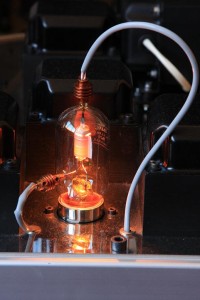 This 35TG amplifier had 3 drawbacks:
This 35TG amplifier had 3 drawbacks:
- Each monoblock did weigh 55 kg;
- Again working on high voltage (>> 800 VDC);
- Again single ended…..was my calculation also applicable to pushpull ultra-parafeed ?
Enter the EL82. So I was looking for some funny tube for doing the push-pull version. From earlier experience I knew that EL82’s were very nice sounding devices. They are not as common as the EL84, but when you look at the specifications these are far more interesting. Downside is their lower output than the EL84. But good quality EL84’s can cost serious money for the simple reason that they are popular; NOS is becoming scarce so the price rises.
On the Internet I found a sealed box with 200 EL82’s made for Philips in the Mullard Blackburn factory in November 1961. All from a single production day !
These pentodes will be used in triode-mode because that sounds better. As a driver for a pair of EL82’s (pushpull) another EL82 will be used.
Input: EC86. For the input tube an EC86 is used. Again not really used so prices are very acceptable. There is enough choice and scoring a bunch of goldpin / same stock / Special Quality EC86’s is not difficult. Why is this tube seldom used; sound wise it is great ? There are brands using ECC86’s but a second triode was not needed for my application.
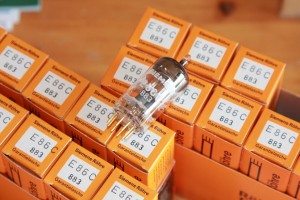
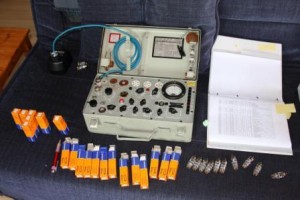 Schematic. Following Lynn Olsons Topology (see my 833A article) I made a pushpull schematic. I had to tinker somewhat with the powersupply hence you see some extra resistors and capacitors to get the correct voltage to the EC86 and EL82 (driver).
Schematic. Following Lynn Olsons Topology (see my 833A article) I made a pushpull schematic. I had to tinker somewhat with the powersupply hence you see some extra resistors and capacitors to get the correct voltage to the EC86 and EL82 (driver).
Christof’s Silverstepper will be present at the input. There is an interstage between the EL82-driver and the EL82 pushpull pair.
The powersupply is again my standard principle: hexfred → snubber → coreless coil → first capacitor → choke → second capacitor.
 Building. I had already some metalwork lying around for 2 monoblocks. Each monoblock consists of two separate casings connected by two cylinders. One of the cylinders is hollow so it is quite easy to put the complete powersupply in one casing and the audio part of the amplifier in the other casing. In essence each amplifier has a dedicated powersupply firmly fixed without connector.
Building. I had already some metalwork lying around for 2 monoblocks. Each monoblock consists of two separate casings connected by two cylinders. One of the cylinders is hollow so it is quite easy to put the complete powersupply in one casing and the audio part of the amplifier in the other casing. In essence each amplifier has a dedicated powersupply firmly fixed without connector.
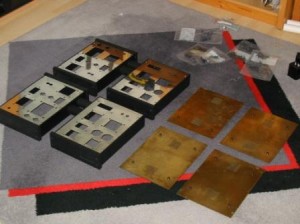 Innards. When flipped you can see the 2 casings of each amplifier. The powersupply is the quite neat part with almost military parallel cabling. The audio part is more loosely wired with connections as short as possible (for instance using the resistors straight from one component to another). You can see the hollow cylinder between the casings as well: the power lines are running through that cylinder.
Innards. When flipped you can see the 2 casings of each amplifier. The powersupply is the quite neat part with almost military parallel cabling. The audio part is more loosely wired with connections as short as possible (for instance using the resistors straight from one component to another). You can see the hollow cylinder between the casings as well: the power lines are running through that cylinder.
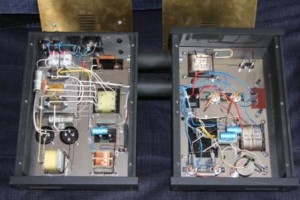
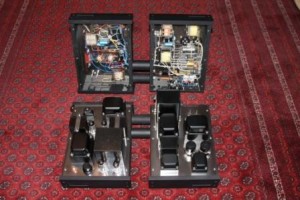 Heating. For this amplifier I used Hexfred’s again. But this variety was new to me. What became obvious was that this specific Hexfred wanted to be heated to sound properly. Normally rectifiers will be fixed to a cooling device, but in this instance they are fixed to an aluminum sheet which is actually heated ! The heating is done by a resistor which has its dedicated taps on the power transformer.
Heating. For this amplifier I used Hexfred’s again. But this variety was new to me. What became obvious was that this specific Hexfred wanted to be heated to sound properly. Normally rectifiers will be fixed to a cooling device, but in this instance they are fixed to an aluminum sheet which is actually heated ! The heating is done by a resistor which has its dedicated taps on the power transformer.
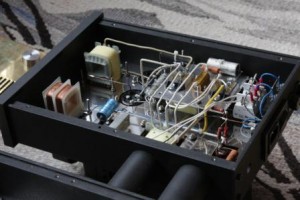 Results. Mission succeeded; the calculations are also applicable for pushpull amplifiers ! The sound is very good with great imaging. The Silversteppers are very handy as these allow me to compensate for acoustic/room defects. As these amplifiers are used without preamp, but straight from a cd-player with volume control, the Silversteppers give me a balance-option.
Results. Mission succeeded; the calculations are also applicable for pushpull amplifiers ! The sound is very good with great imaging. The Silversteppers are very handy as these allow me to compensate for acoustic/room defects. As these amplifiers are used without preamp, but straight from a cd-player with volume control, the Silversteppers give me a balance-option.
My next amplifier will be another EL82-device with different input/drivers as I think the schematic can be much simpler and more straightforward. Then I will use also Silvercore output transformers (new for me) as well as steppers.
Regards, Reinout

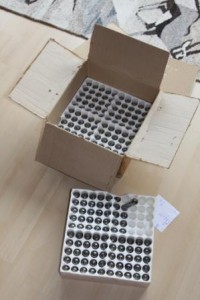
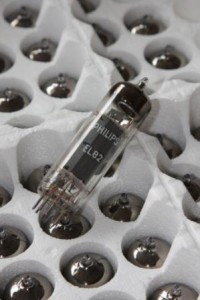
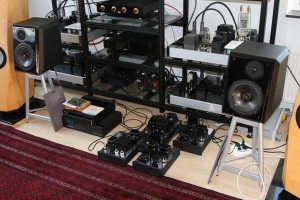
Schematic diagram? With component values and driver transformers, wich type and brand?
I am interested to buil this amp.
Thanks!
Wow! Die Monos sehen mal klasse aus und der Aufbau (die inneren Werte) wirkt ebenso toll. Die EC86 stecken in meinen beiden momentanen Lieblings Phonopres die von Reinhard Hoffmann (INnovative Audio) als DiY-Projekt entwickelt wurden. Die originalen Röhren russischer Provinienz sind schon toll, aber mit NOS Mullard wurde die Wiedergabe nochmals besser. Ich denke ich gehe auch mal auf Suche nach Röhren mit dem Aufdruck von Siemens 🙂
@Christof:
Nach Weihnachten steht der erste Selbstbau eines Phonopre from-the-scratch an und das Konzept von Johannes LeBong (der 6SL7-Pre soll es sein) sieht 1:15 Übertrager für das DL103 vor … sowas hast Du doch auch zu bieten. Ich denke ich komme demnächst mal auf Dich zu. Schön, dass Du Reinout hier die Möglichkeit gibst seine Kreationen der Öffentlichkeit zu präsentieren und …
@Reinout:
Klar, auch ich will den 35TG Amp sehen!
Mit analogen Grüßen aus Wiesbaden,
Mathias
nimm einen 1:10 für das DL103, klingt am besten…
1:10 habe ich ja sowieso schon hier, wenn auch bisher nur aus Schweden. Erstmal will ich sowieso nur was auf die Beine stellen das funktioniert und die Schaltung die Johannes da vorschlägt die ist einfach genug für ein vorsichtiges Herantasten an die Thematik und es steckt sicher noch viel Potential für Verbesserungen drin.
Ich denke da auch an das Netzteil, denn so eine L-C Siebung mit Röhrengleichrichter das klingt für mich als Neuling schon mal sehr lecker.
Na klar wollen wir auch Deinen 35TG amp sehen!
Danke im Voraus
Christof